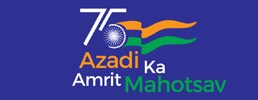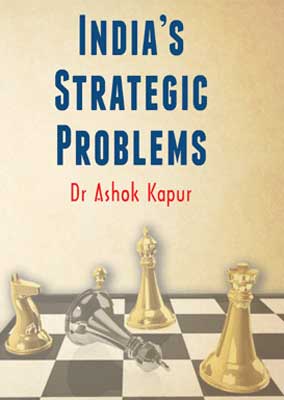IDR Blog
What has become of Taliban in Afghanistan?
Taliban has all along been considered a formidable, resilient unified front with an effective chain of command. But, like every other entity that is prone to change, or in this case, decline, the fissures within Taliban and the extraneous challenges that are being mounted against it, have certainly left a deleterious impact on this movement. Where on the one hand its image as an organisation with a tightly-knit command structure is getting challenged, a challenger in the form of ISIS is wresting power and allegiance away from it.
…Taliban continues to be a beneficiary of an alien regime. Much of its ideological and monetary support is routed through the gullies of Rawalpindi…
In fact, in a dramatic blaring out of these differences, reports indicating a break-out of violent fight between the Taliban commanders at a gathering in the Pakistani town of Kuchlak and the subsequent speculations suggesting the death of the new Amer-al-Mominen (Leader of the Faithful), Mullah Akhtar Mansour in the aftermath of the quarrel, have demonstrated that all is not well in the paradise.
While a barrage of reports and an audio message (reportedly) from Mullah Mansour quelled apprehensions about Taliban going headless again, but what these developments did manage to spell out is that maybe life has begun taking a full circle for Taliban.
In these circumstances, it would be poignant to ask if we will once again see a united Taliban on the scene. From the looks of it, this appears to be a distant possibility, but a possibility nevertheless. Given the present scenario however, it would be wiser to place our bets on the following assessment: Taliban is not the same as before, and perhaps, would never be.
Still a Proxy
Situated in the safe spaces provided by the notoriously dangerous and highly porous Durand Line, it no longer comes as surprise to know that the deep-state in Pakistan is puppeteering the Taliban. It is certainly no longer a revelation, quite like it never was; in fact, its repeated mention has robbed it off any effect it may have had in the past.
With its base of supporters shrinking in Afghanistan, Taliban is experiencing domestic entropy which can further get aggravated if its benefactors decide to pull their hands.
However, what it does drive home again and again is the point that despite holding much significance in Afghanistan’s peace process, Taliban continues to be a beneficiary of an alien regime. Much of its ideological and monetary support is routed through the gullies of Rawalpindi, with most of its safe havens found across the Durand Line – in Pakistan, and not within the country it seeks to control.
Although it has been making attempts to shift its base from Quetta to the province of Helmand in Afghanistan, the fact that Taliban had begun and continues to operate from the precincts of another nation makes it susceptible to expulsion. Here it becomes crucial to underline that Taliban was a conscious creation of comfort for those who had sought to achieve a degree of ‘strategic depth’ through it, placing the movement much at the mercy of foreign powers.
With its base of supporters shrinking in Afghanistan, Taliban is experiencing domestic entropy which can further get aggravated if its benefactors decide to pull their hands. After all, a creation of convenience is but that- a convenience which when no longer serving any purpose will get the axe.
Currently reports are rife about the possibility of a new round of Peace Talks happening in early 2016, with Pakistan promising to ‘deliver’ Taliban to the table of consultations. The fact that Pakistan can still and does indeed produce and withdraw Taliban from the discussions as and when it likes goes on to speak tomes about who controls the actual strings of the movement.
Throwing Taliban into a state of disarray, what aggravated the ills for the movement was the apointment of Mullah Akhtar Mansour as the new leader much to the resentment of many within.
Internal Dissent
Rarely has Taliban’s infighting been ever made public like it is being made now. Ever since the death of its leader, Mullah Omar was announced and confirmed, Taliban has been witnessing an internal turmoil with many rivaling factions emerging from within a movement that was for long a united front.
Coming after the first round of talks in the Afghan peace process, the announcement of Mullah Omar’s death is understood to have sabotaged what remained of the already precarious chances of initiating reconciliation within Afghanistan. But apart from derailing the subsequent rounds of the peace process (until now); the announcement also laid bare a race for succession within Taliban. In fact, according to the Afghan Analyst Network, a segment of dissenters took their grievances to a private news network in Kabul, doing something that had no parallels in the past.
Throwing Taliban into a state of disarray, what aggravated the ills for the movement was the apointment of Mullah Akhtar Mansour as the new leader much to the resentment of many within. To many within Taliban, the reins of the movement were to be rightly transferred into the hands of the ‘real’ heir of Mullah Omar- his son, Mullah Mohammad Yaqoub, instead of Mullah Mansour.
However, this dispute soon got resolved in favor of Mansour who could manage to sway the allegiance of Yaqoub and Mullah Omar’s brother, Mullah Abdul Manan Akhund, in his favor.
The porosity of its borders and the continuing volatility in Afghanistan’s political setup has implied that the expanding ISIS activities can find a fertile ground for itself in this country, and so it has.
But, even after this conciliation, things did not augur well for the movement. Dissenting factions with men and material have emerged in many provinces, such as the Taliban stronghold-Zabul, challenging the supremacy of the new leader. Notwithstanding their actual physical and economic strength which is relatively insignificant when compared to that of Mullah Mansour’s coterie, it is nevertheless critical to note that most of the dissidents were at the helm of affairs in Taliban since its coming into existence.
For instance, leading an armed rebellion against the Taliban of Mansour is Mullah Mohammad Rasul, who has also fashioned his faction as the ‘true Taliban’, known in the formal circles as the ‘Higher Council of the Islamic Emirate of Afghanistan’. ‘Higher’ is the word to note here for it hints at the claim that its leadership is the most ‘Fidel’ version of the Islamic Emirate of the deceased Mullah Omar.
On the other side of the spectrum is verbiage of opposition that is yet to translate into physical challenges for Mansour’s lot. Steered by the disgruntled members from the ‘Rehbari Shura’ (Leadership Consultative Council), this plank of opposition is led by Taliban commanders including Mullah Abdul Razaq (interior minister in Taliban’s era), Mullah Hassan Rahmani (governor of Kandahar when Taliban ruled) and Mullah Abdul Jalil (the deputy foreign minister of Taliban) and Abdul Rahman Zahed (former governor of the Central Bank under the Taliban).
With its massive finances, superior technology and greater external support, the ISIS has not only been giving the ANSF a great deal of trouble, but it has eaten into the constituencies of Taliban, both ideologically and territorially.
ISIS Challenge to its bastion
The porosity of its borders and the continuing volatility in Afghanistan’s political setup has implied that the expanding ISIS activities can find a fertile ground for itself in this country, and so it has. If reports are to be believed, Afghanistan’s eastern province of Nangarhar has already become the den of the ISIS, with Jalalabad being declared as the operational capital of the ISIS’ envisioned province of Khorasan. Khorasan, which is an ancient name for territories spanning over Afghanistan, Pakistan and India, is expected to be one of the provinces of the IS Caliphate should it succeed in expanding itself into South Asia.
With its massive finances, superior technology and greater external support, the ISIS has not only been giving the Afghan National Security Forces (ANSF) a great deal of trouble, but it has eaten into the constituencies of Taliban, both ideologically and territorially.
Apparently, most of the members of the Afghan based ISIS are not fighters from Iraq and Syria, but are disaffected Talibs. Interestingly, the ‘official’ media outlet of Taliban, Voice of Jihad is increasingly finding competition from the IS’ run Voice of Caliphate, which has begun using radio waves for propaganda by delivering sermons, issuing fatwas and the like.
…while the strength or weakness of Taliban will be for the time to tell, one thing that is being amply sounded is that Afghans not disposed in favor of this movement.
Where is the Taliban headed?
At present, Taliban is consolidating its hold on Helmand that is critical for it for a variety of reasons, including the province’s vast opium producing fields. At the same time, reports are flooded with information on the expanding ISIS’ footprints in Afghanistan into those territories that used to be the bastions of Taliban.
The internal quarrels within the movement too surface every now and then. And now, with the peace-talks once again being under process, the status of Taliban within Afghanistan seems to be all but confounded.
With more than one Taliban on the scene now; the Quetta Shura and the Qatar political offices often being at fork’s ends; the ISIS drawing the disgruntled Talibs towards it, and Pakistan promising to deliver Taliban as the peace talks begin again, have made Afghanistan look like an ensemble of unyielding questions, adding to its already muddled-up affairs.
There is essentially a lack of clarity as to where Taliban is headed from here. Where on the one hand it is running-down posts one after another, on the other, it is being consistently challenged and tamed alike. Yet while the strength or weakness of Taliban will be for the time to tell, one thing that is being amply sounded is that Afghans not disposed in favor of this movement.
They are repelling the traces of this movement and the like-minded corollaries in whatever form they can. By speaking-out and acting against such parochialism at many levels (from personal resistance to taking out the largest protest march in Kabul), the people of Afghanistan are churning a cultural revolution that should end in a good riddance!
Courtesy: http://southasiamonitor.org/detail.php?type=sl&nid=14934





